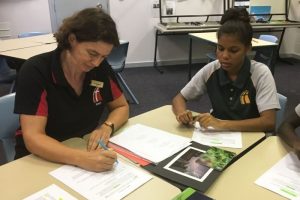David Moore from the Alice Springs Language Centre writes about how they’re using materials in the Living Archive.
Currently we are working on Ripponlea Institute with the development of Cert III in Applied Language. We need a stack of accessible and useful resources for our students in the various languages.
We looked at some of the Arrernte materials on the Living Archive and found that many of them are virtually unusable. They were written a long time ago, and have missing grammatical markers, older spelling, spelling mistakes and obscure words. This means that we can’t take these texts from the site and use them in class without extensive re-working.
What is needed is texts which enable the learner to progress with access to notes and explanations, guides to how grammar and lexical items are used in the text. It seems that the LAAL texts have that potential if spellings were regularised to conform to current Arrernte spelling, mistakes corrected and guides for the learner attached to current files.

I worked with some Arrernte teachers on a few texts, changing words to standard dictionary spellings and reorganising sentences so that this book can be read more easily in class. You can see one uploaded to LAAL as ‘Other Text’ for the story Anwerne Alheke Yerrampeke.
Over time we would like to re-work more of the texts as a class exercise for Cert III. Using texts in various classes we get a sense of how they can be developed. We could make an assessment task for students to work on creating new texts of enhancing some of the Arrernte books that are currently on LAAL.
Josiah Armstrong and I are working on the text for Akngulye arerte from the Arrernte collection in LAAL. We use the Arrernte Picture Dictionary and the Eastern and Central Arrernte to English dictionary to write current spellings: e.g. ‘othene’ changed to ‘uthene’. We will also make an English translation and glossary. The next stage would be to develop worksheets and activities based around the text.
Students will learn to read the texts and will read the text to primary classes when they are on VET work placements in schools.
There are a number of pathways that this course supports: language teacher, translator, writer, illustrator, editor, language research assistant and Language Centre worker….
There is also a lot of potential here for further research, exploring some of the ways in which LAAL can influence language practices.


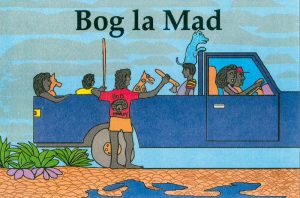
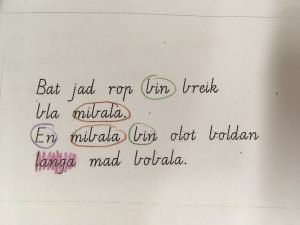

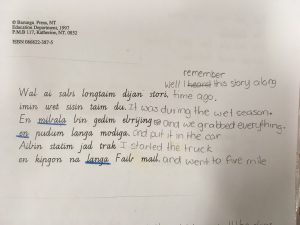


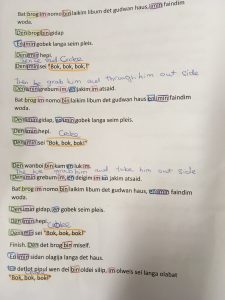 The students all seemed attracted to different tasks but were all engaged. One student colour coded a number of words – colouring all the same words one colour and working out what those words were. Although they all translated one or two sentences, one student enjoyed going on with this and worked hard to write down translations for the whole text. I could see from his writing that he struggled to notice when articles and prepositions were needed in English. Another student was not keen to write but orally worked on translations with me. She was able to switch easily to the correct use of articles and prepositions.
The students all seemed attracted to different tasks but were all engaged. One student colour coded a number of words – colouring all the same words one colour and working out what those words were. Although they all translated one or two sentences, one student enjoyed going on with this and worked hard to write down translations for the whole text. I could see from his writing that he struggled to notice when articles and prepositions were needed in English. Another student was not keen to write but orally worked on translations with me. She was able to switch easily to the correct use of articles and prepositions.